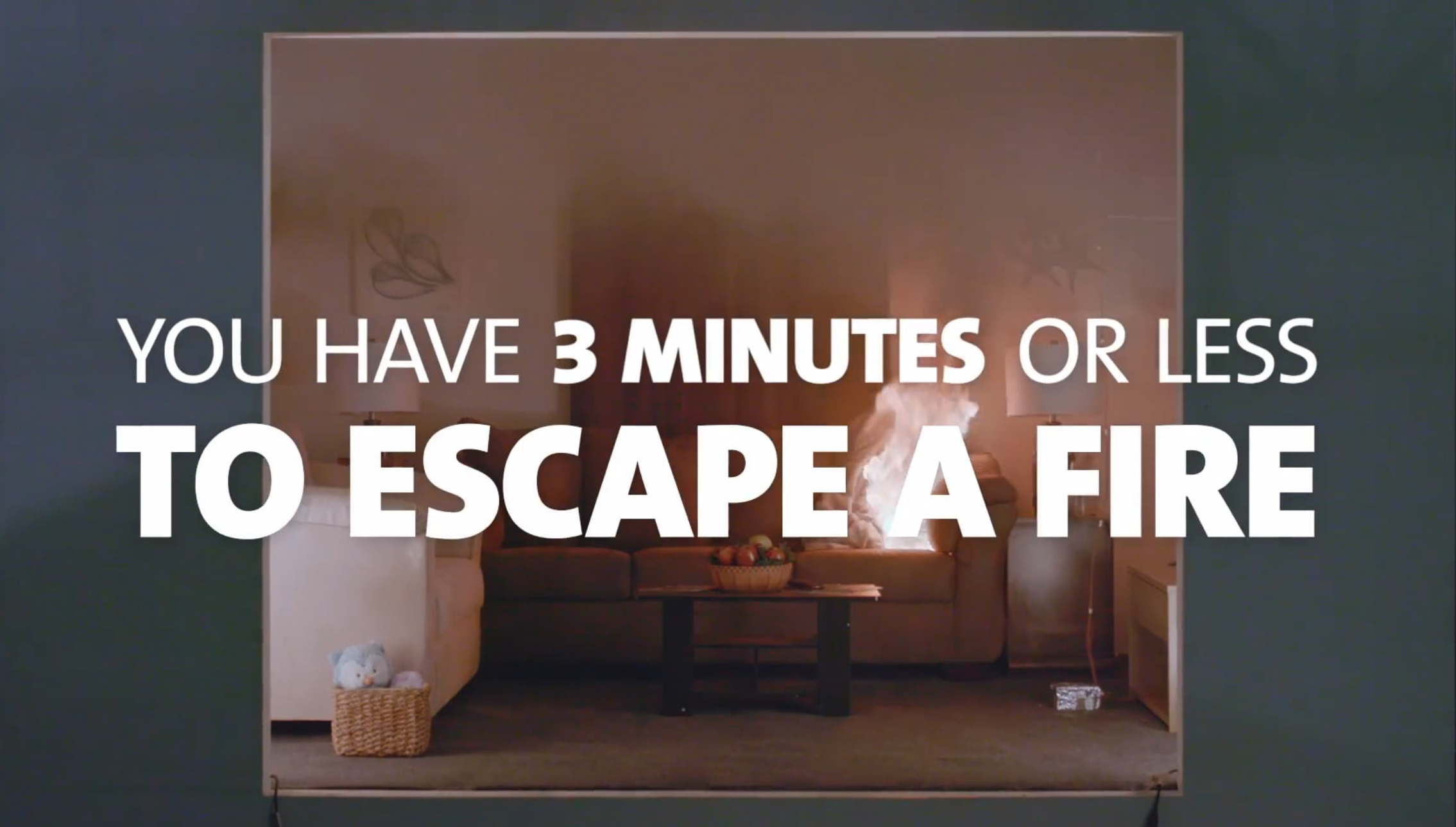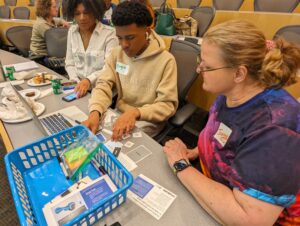New Demonstration Video Shows You Only Have 3 Minutes to Escape a Home Fire

Annual Fire Safety Survey Shows Improvements in Behavior and Awareness, but Knowledge Gaps Still Exist Among General Public
Oct. 5, 2020 (Columbia, Md.) – For Fire Prevention Month, taking place in October, UL Firefighter Safety Research Institute (FSRI) has released a video to demonstrate the remarkable speed of a home fire and encourage people to adopt critical fire safety behaviors to give them more time to respond and escape in the event of a fire. In addition to the video, UL FSRI also released the results of its annual fire safety survey demonstrating the need for more awareness among the general public around the issue of fire safety.
The new video shows a room becoming unlivable in just three minutes, underscoring the need to get out quickly and calling on consumers to take three life-saving steps to protect themselves in the event of a home fire:
- Have working smoke alarms on every floor of your home, including in and outside every sleeping area. Check your smoke alarms monthly and replace them every 10 years. Smoke alarms give you and your loved ones the earliest warning possible that there is a fire.
- Have an escape plan and practice it; know two ways to get out if there is a fire. If there is smoke blocking the door or first way out, use your second way out. Also, if your first way out is blocked get a closed door between you and the fire to buy time to use your second way out, especially if that requires escaping out a window.
- Close Before You Doze® — a closed door can be an effective barrier against deadly levels of carbon monoxide, smoke and flames, and may give you more time to respond to the smoke alarm. In fact, there can be a 900-degree difference in room temperature between a room with an open door and one with a closed door, with the open-door room reaching temperatures of 1,000 degrees Fahrenheit or more. In 2018, UL FSRI released its Dramatic Difference video demonstrating this comparison.
The annual fire safety survey conducted in September 2020 shows that many misconceptions still exist around fire safety. Only 35% of people always sleep with their door closed, up from 26% in 2019. And while more than half of the responses (58%) indicated that they would be alerted to a home fire by their smoke alarm, one-third (33%) of respondents hold the belief that they would be alerted by the smell of smoke, while another 9% believed they would be alerted by other factors such as temperature or a family pet.
Other highlights from the fire safety survey include:
- More than a quarter (27%) of people estimated they would have more than three minutes to safely exit their home in the event of a home fire. However although the majority of people understand that they need to quickly exit their home, 47.8% of people believe they would have enough time to gather what’s important to them and safely exit their home and 24.2% of respondents think the risk of injury or death is low in a home fire.
- 61.8% of respondents indicated they have fire escape plan, but more than half (56%) only review that plan once per year or less often. Nearly 40% of people have no escape plan at all. People with children in their household are more likely to practice and review their escape plans monthly.
- The majority of people say they have smoke alarms in their home that they believe are working, but well under half (39.1%) meet the recommended monthly testing frequency and have tested their smoke alarms in the past month. Many respondents indicated their smoke alarms don’t cover every recommended area in their home.
“What we see from our annual safety survey is that many people still underestimate the danger of a home fire,” said Steve Kerber, vice president of research at UL FSRI. “During a fire, rooms can quickly be filled with toxic smoke. What is particularly concerning is that people think they will have time to gather what’s important to them, ignoring the likelihood that smoke will have reduced visibility and can cause harm very quickly. While some people think they will be alerted to a home fire by the smell of smoke, if someone is asleep, they would likely be incapacitated by the smoke before they could ever smell it. Our new video drives home the point that fire moves fast, and people should be prepared now with smoke alarms, escape plans and by closing their bedroom doors at night.”
The new video is being released alongside another video of an experiment showing a side-by-side comparison of natural versus. synthetic furnished rooms highlighting how fast fire spreads in today’s fire environment. Fire is faster today due to synthetic materials, lighter construction materials and open floor plans. The second video stems from a series of experiments examining fire behavior and provides valuable insights for first responders. Both videos can be viewed at https://s.ul.org/2SbGT7R.
For information on the research behind these life-saving initiatives and more fire safety tips, please visit CloseYourDoor.org.
Survey Methodology
Allison+Partners Research + Insights surveyed 3,017 individuals over the age of 18 in the United States. The survey was fielded using Qualtrics, and panel was sourced from Lucid. Fielding was executed in September 2020.
About UL Firefighter Safety Research Institute
UL Firefighter Safety Research Institute (FSRI) advances fire research knowledge and develops cutting edge, practical fire service education aimed at helping firefighters stay safe while more effectively protecting people and property. Guided by a global advisory board comprised of fire service personnel, UL FSRI investigates residential, commercial, and industrial fires through full-scale testing, field-testing, and modeling to replicate actual fires faced by firefighters. Research results are shared through interactive training courses that have reached hundreds of thousands of firefighters globally. To learn more, visit ULFirefighterSafety.org. Follow UL Firefighter Safety Research Institute on Instagram and Facebook.
About Underwriters Laboratories
Underwriters Laboratories is a nonprofit organization dedicated to advancing the UL public safety mission through the discovery and application of scientific knowledge. We conduct rigorous independent research and analyze safety data, convene experts worldwide to address risks, share knowledge through safety education and public outreach initiatives, and develop standards to guide safe commercialization of evolving technologies. We foster communities of safety, from grassroots initiatives for neighborhoods to summits of world leaders. Our organization employs collaborative and scientific approaches with partners and stakeholders to drive innovation and progress toward improving safety, security, and sustainability, ultimately enhancing societal well-being. To learn more, visit UL.org.
PUBLISHED









